Alternating Treatment Design Examples
Alternating treatment design examples. They had the teacher monitor crying for a 10 day baseline period then use a new reinforcement system with the child for 10 days treatment then go back to the baseline situation for 10 days then back to the treatment for 10 more days. Alternating Treatments Design Use when. Results clearly demonstrated the differential effectiveness of the three as well as a general decrease in.
It often doesnt include a baseline to begin with. Experimental control is shown when the data paths of two treatments show little or no overlap. The researchers found that children emitted a higher number of tacts when that behavior received attention as opposed to token reinforcement.
An experimental design consisting of a baseline phase intervention phase return to baseline condition phase and a second intervention phase. Onghena. For example positive attention for studying could be used one day and mild punishment for not studying the next and so on.
You want to determine the relative effectiveness of more than one treatment on a given behavior Baseline data are either unavailable or might be unstable Treatments are sufficiently different from each other Participants can discriminate the treatment conditions. It does not require withdraw. Or one treatment could be implemented in the morning and another in the afternoon.
A little used and often confused design capable of comparing two treatments within a single subject has been termed variously a multielement baseline design a multiple schedule design and a randomization design. Ebby and Greer 2017 used this design to compare reinforcers that maintained tact responses with preschool children. Use a different setting for each example eg work school clinic etc and explain how ethical legal and sociocultural considerations could influence the decision to use one alternating treatments design over another.
Alternating treatments design two or more treatments are alternated relatively quickly on a regular schedule. Efficiently compares intervention effectiveness. Alternating-Treatments Designs Changing-Criterion Designs A-B Withdrawal Design Used to quickly assess the effects of a treatment Phase 1 A Measure baseline response Phase 2 B Introduce treatment while measuring response Disadvantage Inability to distinguish experimental effect from confounds Example of A.
It does not include a return to baseline. Alternating Treatments Design With a Baseline and a Final Treatment Phase.
It often doesnt include a baseline to begin with.
Results clearly demonstrated the differential effectiveness of the three as well as a general decrease in. Efficiently compares intervention effectiveness. It can be used to assess generalization effects. This includes the single-phase which can be either with or without a no treatment control condition. Our example is from Hart et al. Or one treatment could be implemented in the morning and another in the afternoon. 1964 using behavior modification in a nursery school to treat the crying of a 4-year old boy. A little used and often confused design capable of comparing two treatments within a single subject has been termed variously a multielement baseline design a multiple schedule design and a randomization design. Alternating Treatments Design With a Baseline and a Final Treatment Phase.
Efficiently compares intervention effectiveness. The two-phase alternating treatments design is an initial baseline phase followed by the alternating treatments phase. It does not include a return to baseline. Provide a real life example of each of the alternating treatments methods. Ebby and Greer 2017 used this design to compare reinforcers that maintained tact responses with preschool children. The second return to phase line is to see whether the initial treatments effects are replicated. Lastly the three-phase alternating treatments design is an initial.

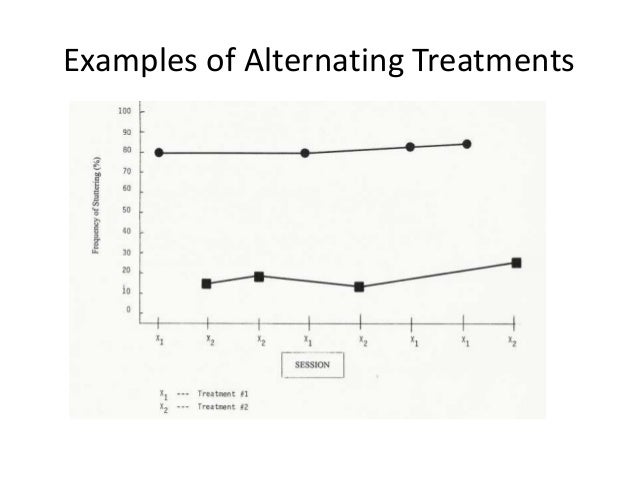




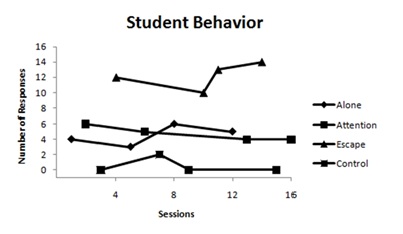
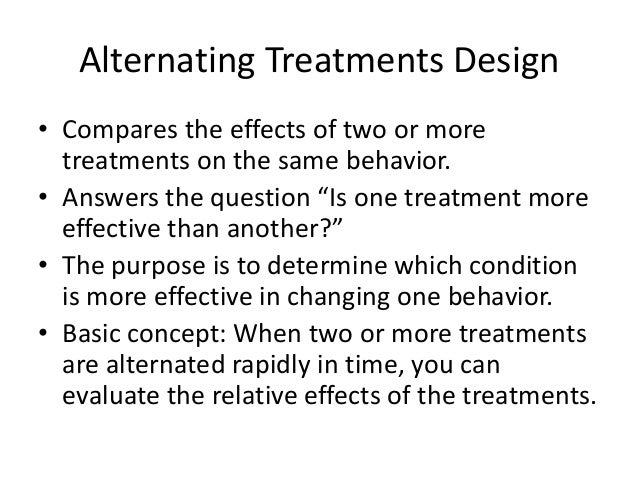








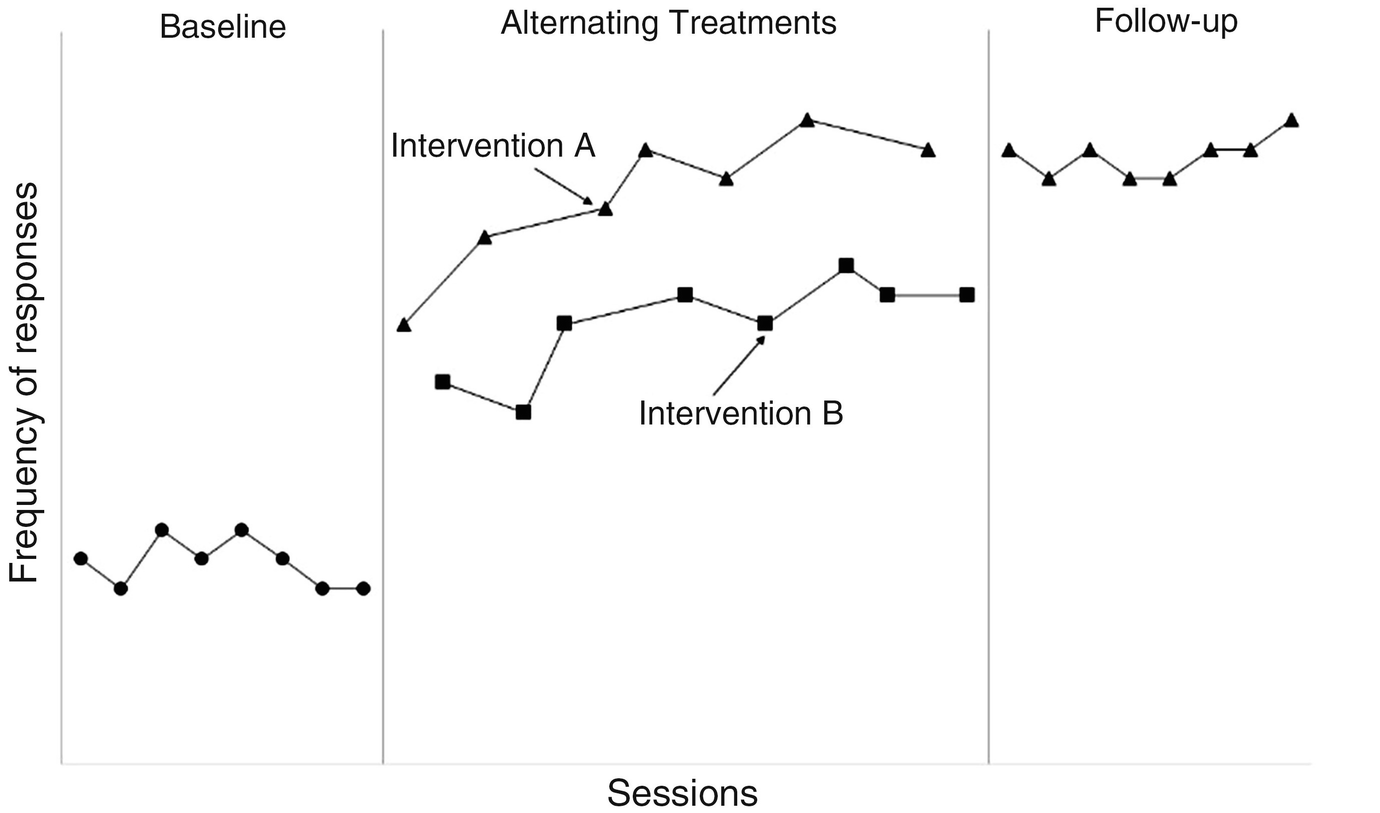



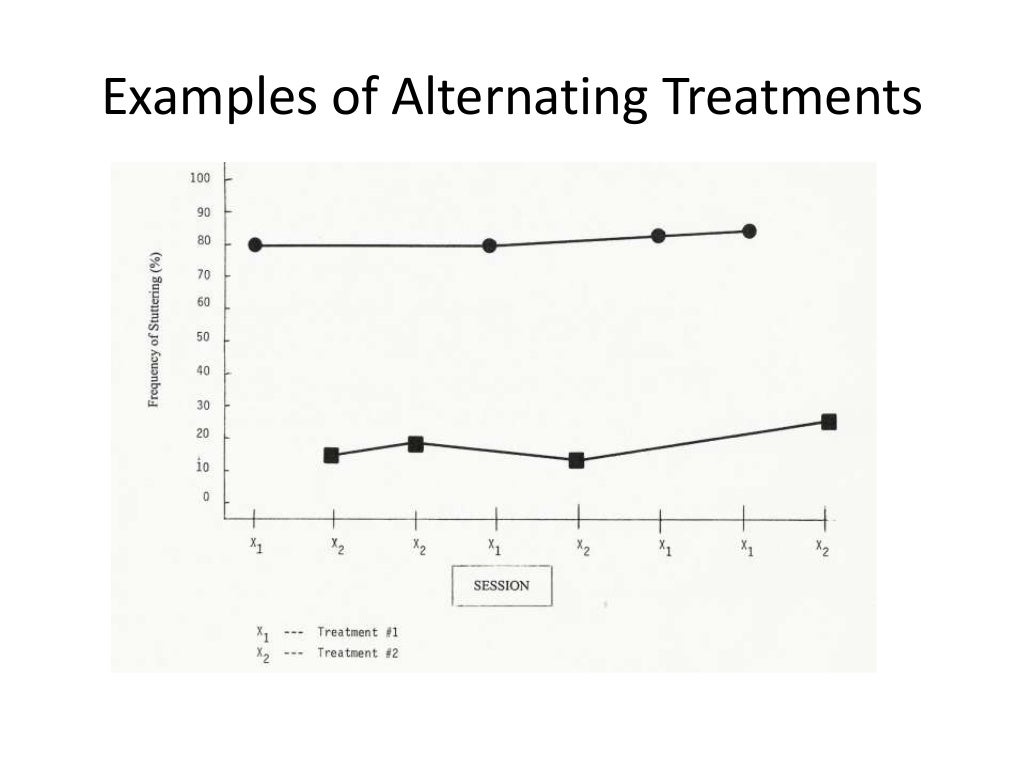







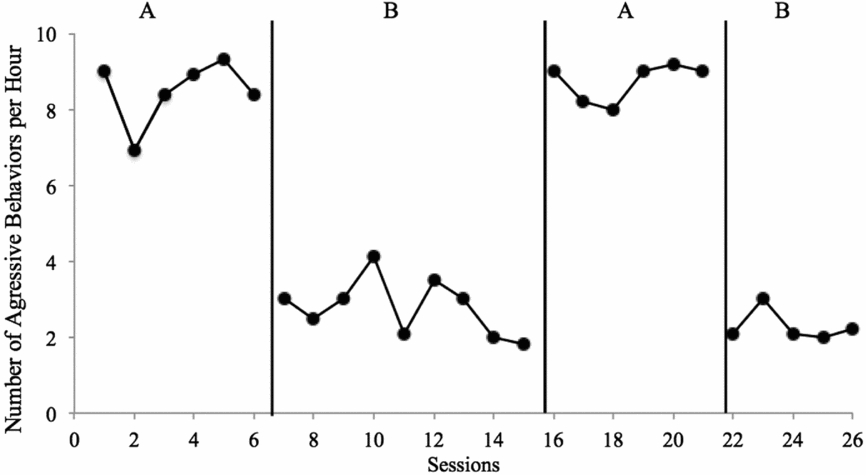

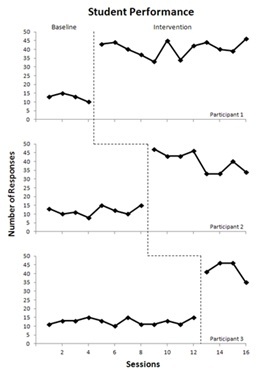


Post a Comment for "Alternating Treatment Design Examples"